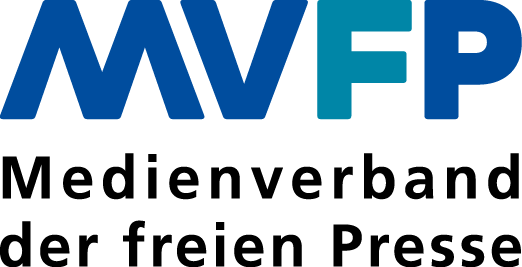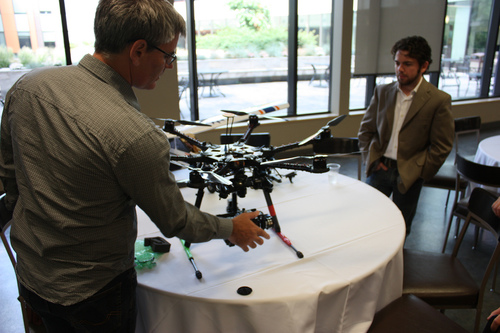Interview: Matthew Schroyer, founder & president, the Professional Society of Drone Journalists
This week, we’ve been taking a closer look at the world of drones. Whether they’re being used to fulfil Amazon’s delivery ambitions, criss-crossing the skies over the Rio Olympics, or being used to safely remove land mines, drone news is everywhere – and we've been exploring their huge potential.
We spoke to Matthew Schroyer, founder and president of the Professional Society of Drone Journalists, to talk about his organisation, drone regulations, and how drones can be used as a storytelling tool.
What is the professional society of drone journalists?
The Professional Society of Drone Journalists is an international organization that began in 2011 in order to establish the ethical, educational, and technological framework for drone journalism. In other words, myself, along with 600 other members from dozens of countries, are working to try to help drone journalism grow from a concept into something that is practiced professionally and successfully.
What are your main objectives as an organisation?
We have our stated purpose, but what that means in terms of specific objectives has changed as the technology, regulations, and journalism environment has changed. We primarily are interested in outreach and being sources of information, who individually can help answer questions or guide regulatory frameworks.
To that effect, we've supplied regulatory commentary to the Federal Aviation Administration in the United States, and evidence to the UK House of Lords. At this moment, I would say that our objective is to ensure that drone journalists can operate drones safely and freely, no matter how well-funded, in any country, in order to expand the public consciousness.
Is the concept of drone journalism just hype?
No, not at all. But it does depend on the willingness for news organizations to take chances on new technology, and to invest resources into development. Researchers and independent innovators already had some success tinkering with drones, even without massive resources.
What type of scenarios you think Drones will be used in?
We already see drones being used frequently to enhance storytelling and add visual flair in traditional news packages. Sometimes this contribution is very subtle, but is easy to spot with the trained eye. The tool only becomes more useful when the scope and urgency of the reporting increases, such as with natural and man-made disasters, warfare, and environmental reporting. A common theme you'll find is drones being deployed where reporting is dangerous or filled with obstacles.
Are there any other ways they can be used in journalism behind video? Do you have any examples?
Once the drone is realized as a mobile platform for any number of sensors, and not just those in the visual spectrum, numerous possibilities become available. Multispectral sensors can be used to detect chemical spills, and that data can be used to fact-check government or corporate records.
Drones have been used, for example, to find the volume and environmental impact of a burning toxic waste dump. The intersection of VR journalism and drone journalism is readily apparent through projects such as the 3D modelling of the war-torn Donetsk International Airport in Eastern Ukraine.
Is drone journalism all about news journalism? Or are there ways it can work for magazine publishers?
Drone journalism is concerned with using drones for impactful, data-driven journalism and storytelling. But the drone is a tool which can be used for any number of purposes, and publishers may be willing to experiment. One board member at the PSDJ was experimenting with drones to project art and advertisements on the sides of buildings. Drones have been used in live-action art productions. There could be other ways in which drones could benefit publishers, other than gathering news and information.
What advice would you to give to publishers who thinking of experimenting with drone journalism?
Keep experimenting, and be open to networking with subject matter experts. I mentioned multispectral drones for environmental reporting, but it would be wise to work with experts in optics, sensors, and environmental science to make sure the data is sound and the findings are accurate. This kind of research and development takes hard work behind the scenes, and hard work is not terribly flashy. It's easy to make drones out to be some kind of flashy thing, but flashy things always fizzle and are not going generate long-term value.
What are the regulations governing drone journalism use in the US? Are they the same in other countries?
It always has been a challenge to fly in the US, but in August, the restrictions will be greatly reduced. In the past, flights were only granted on a case-by-case basis, and the operator needed to have a pilot's license. Going forward, an operator will only need to pass an aviation knowledge exam and abide by fairly straightforward rules. This brings us more into line with less-restrictive countries such as Australia and Canada.
How does your academic background influence what you are doing?
I don't know if it can be completely attributed to my academic background, but I certainly try to plan for what my subject areas will look like 5, 10, and 20 years in the future. I try to frame challenges as research questions, in that as I can learn from others before me and produce something that can be shared within my community. With drones, this means looking at innovations in adjacent fields and trying to incorporate them in new initiatives.
Which media brands do you think are doing drone journalism well? Could you give us some examples?
This is difficult to say, because it's far more common for established brands to contract out to drone experts, rather than developing drone experts from within. Those that have innovation units or robust internal R&D have been doing particularly well; namely the BBC, the New York Times, and BuzzFeed.






